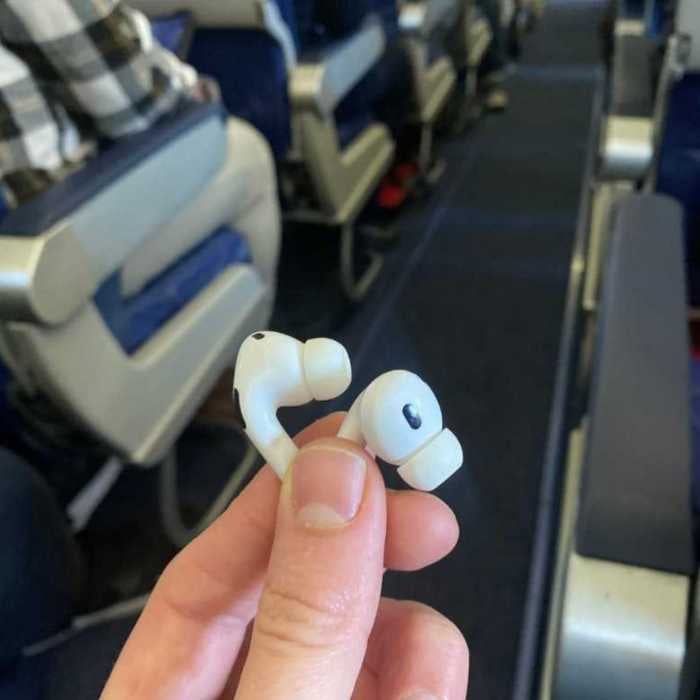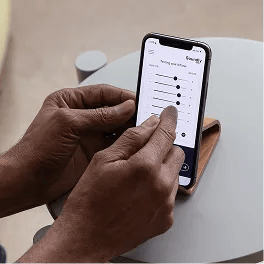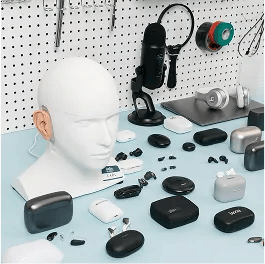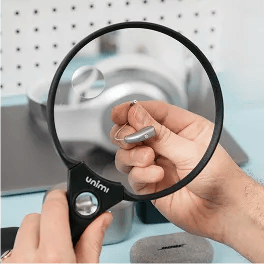👋 Looking for an OTC hearing for all-day wear? We recommend Sennheiser All Day Clear or Sony CRE-C20.

Key Takeaways:
- AirPods won’t fully replace hearing aids, but for those with mild loss or who need a boost situationally, Apple's new feature is fantastic and easy to use
- To unlock Apple's onboard OTC hearing aid you will first need to update your iPhone or iPad to OS 18.1 (or later)
- Not all AirPods are compatible with the new feature. You will need AirPods Pro 2 (linked here)
- Use your iPhone to take a personalized hearing test. The results are then applied to your AirPods Pro 2, allowing you to use them as a hearing aid. Full process below.
- Apple's hearing aid features are available in around 25 countries today with expansion expected in the future
Let's Start With Some Background
Apple sells north of 100M pairs of AirPods every year. Early Apple fans will remember the good old days of free low-tech corded headphones that came with every iPhone. In 2016, Apple unveiled AirPods, which quickly became a technology staple in coffee shops, airplanes, and Zoom calls.
Apple first introduced hearing-enhancement features with transparency mode on the AirPods Pro in 2019, refining the feature further with the AirPods Pro 2 in 2022.
Yet, until now, they hadn’t quite crossed the line into true hearing aid functionality. The FDA's decision to make hearing aids available over the counter in October 2022 was a key catalyst.
Apple's OTC Hearing Aid
In late 2024, Apple announced a groundbreaking update to AirPods Pro (2nd generation), introducing a built-in Hearing Aid mode designed to assist individuals with mild to moderate hearing loss.
This feature, approved by the FDA in the U.S., transforms AirPods into an over-the-counter (OTC) hearing aid, leveraging Apple's powerful computational audio and machine learning to enhance speech clarity and reduce background noise.
Rather than create a dedicated hearing aid device like Sony or Sennheiser, Apple has embedded this functionality into its existing hardware through the first FDA-cleared over-the-counter software.
With a simple setup inside iOS 18.1 (or later), users can personalize their hearing experience through a built-in hearing test. This move marks Apple's biggest step yet into hearing health, positioning AirPods as an affordable alternative to traditional hearing aids.
As a hearing aid user, I’ve been eagerly awaiting the chance to test this new feature, and now the time has finally come. In this tutorial, I’ll guide you through the setup, share my initial impressions of sound quality, and explore where AirPods fit into the growing OTC hearing aid market."
Prefer to watch? My hands-on review below. 👇
Getting Set Up
To follow the tutorial steps below you will need a pair of AirPods Pro 2 devices (find them here).
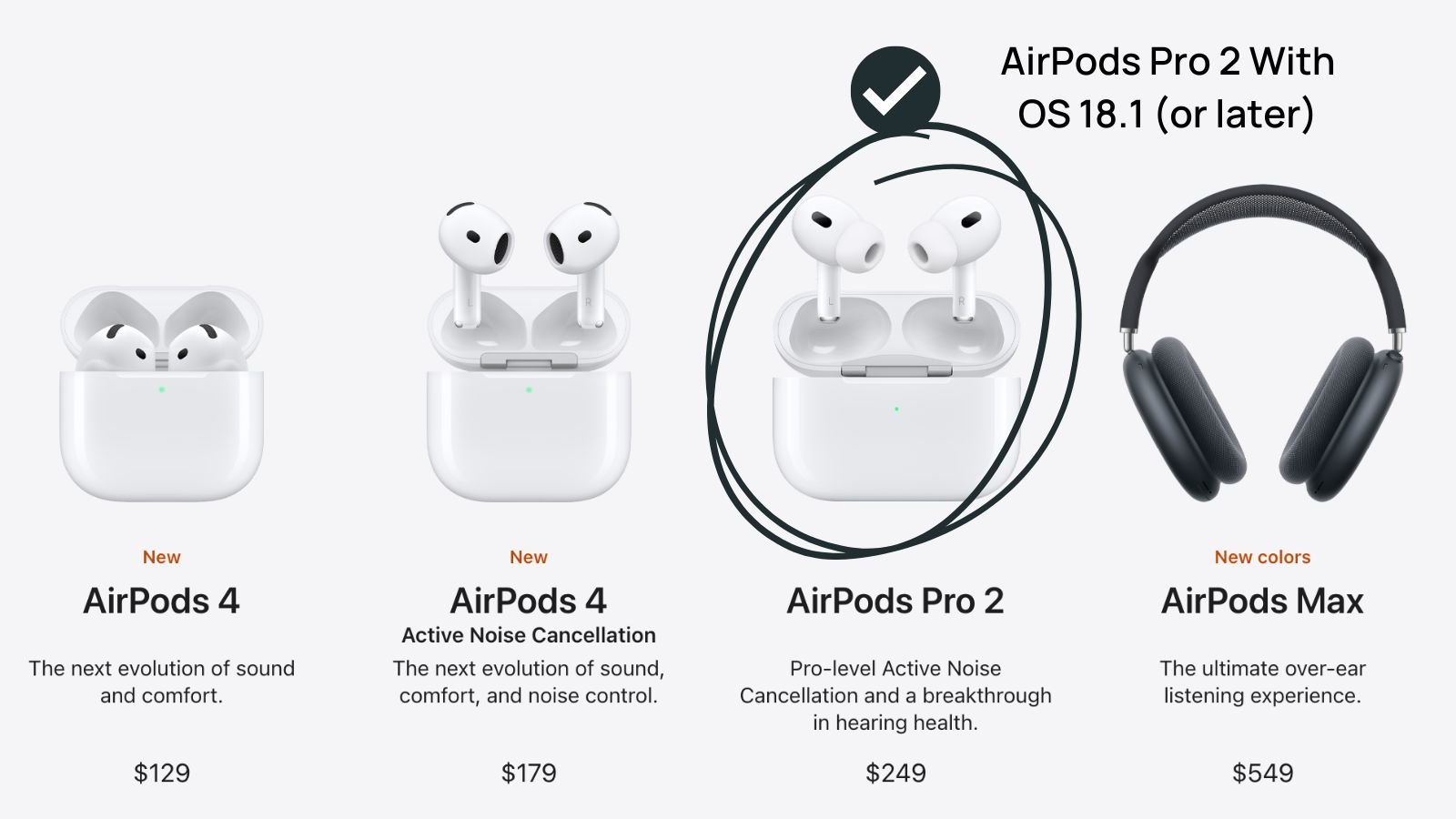
To use the Airpods hearing aid mode, you’ll need to update your iPhone or iPad to OS 18.1 or later. Follow these steps to update if you have't already:
- Open Settings on your iPhone.
- Tap General.
- Select Software Update.
Your device will display the current OS version. If an update is available, tap Update to install.
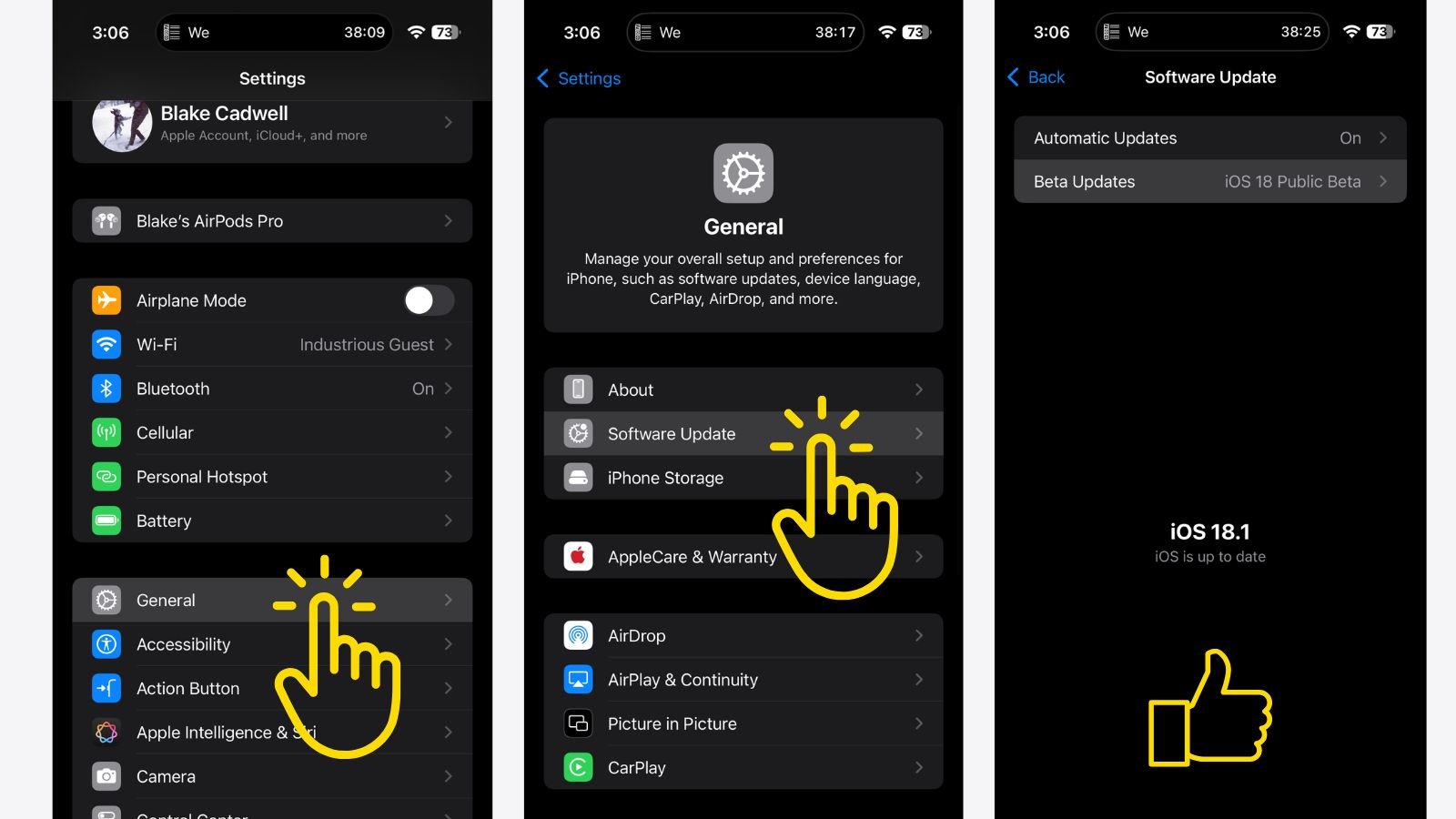
Step-By-Step Guide
With your setup out of the way, it's time to turn your AirPods Pro into a pair of OTC hearing aids.
Step 1: Connect Your AirPods if Needed
If this is your first time using your AirPods Pro 2, follow the setup instructions to pair them to your iPhone or iPad.
Step 2: Open Your Settings App
Tap on your AirPods (they should appear at the top of the list), then select Take a Hearing Test.
.jpeg)
Step 3. Proceed Through The Onboard Test
The test will first analyze your surroundings to ensure minimal background noise. Next, it will play a tone to check that your AirPods are snug in your ears.
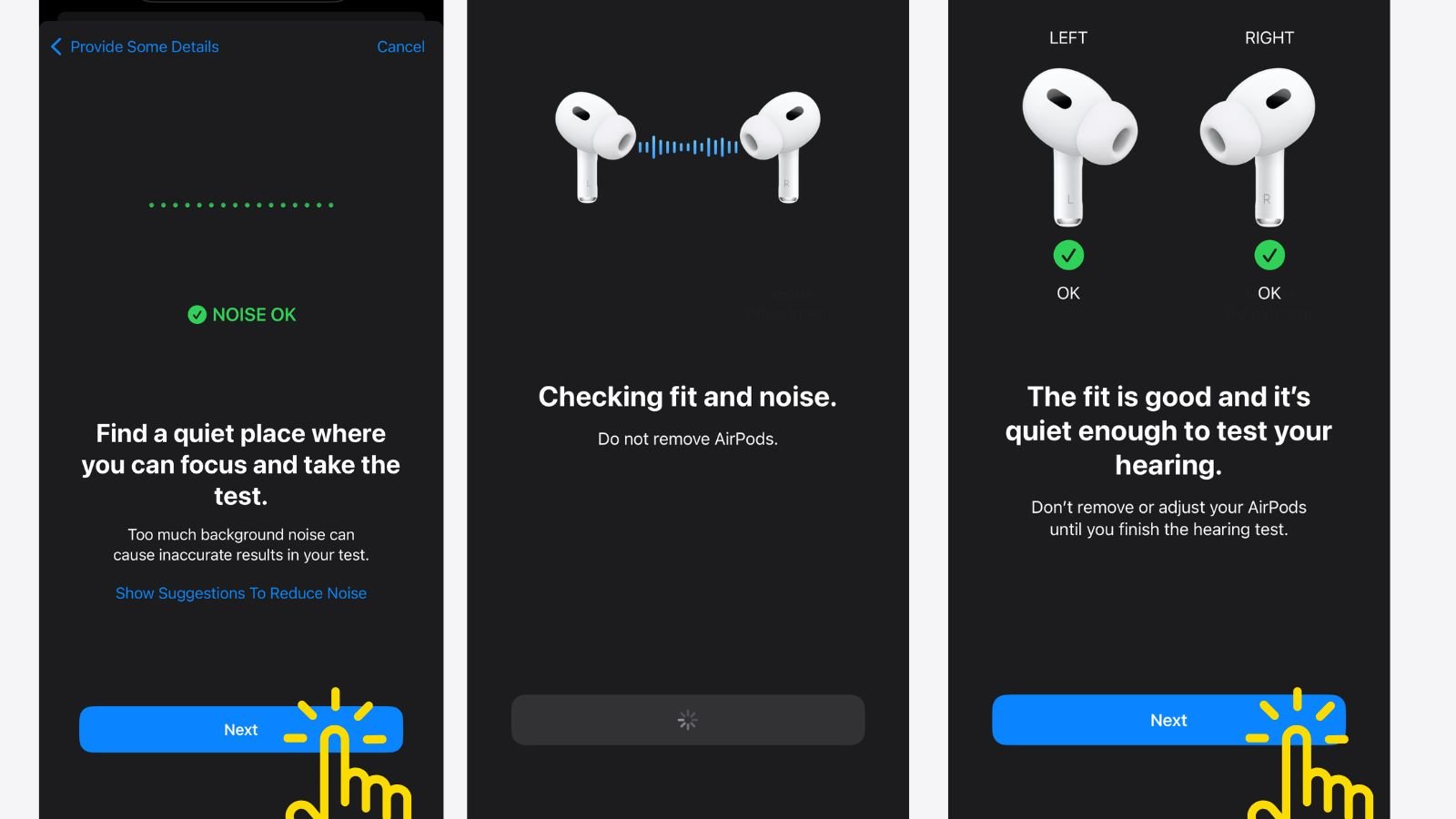
Once everything is set, Apple's onboard test takes about five minutes, assessing each ear individually. Simply listen for the beeps in each ear and tap the screen each time you hear a sound. Your phone will automatically switch to Do Not Disturb during the test—a nice touch!
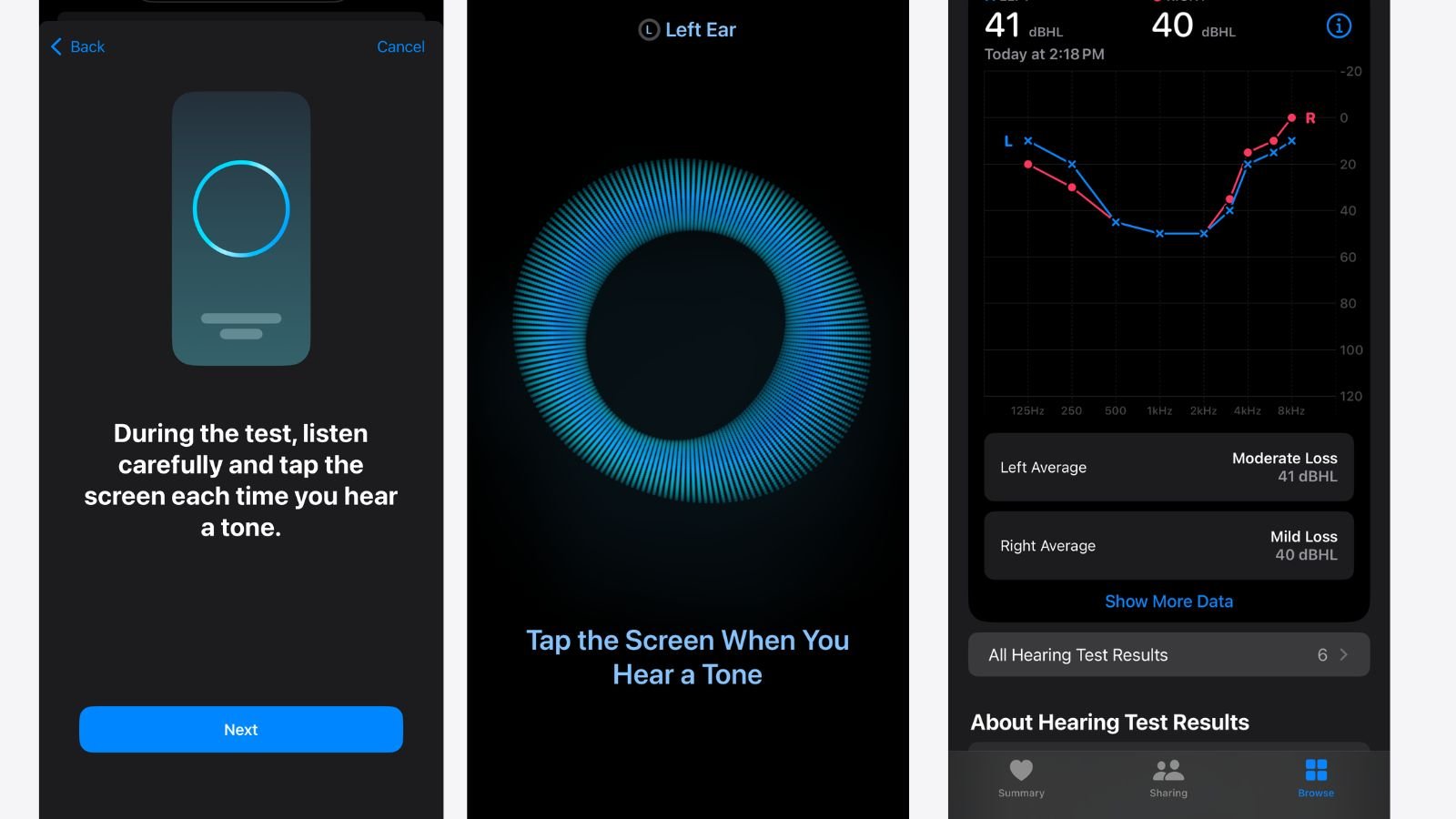
Once the test is complete Apple will upload the results to Apple Health where you can see a history of all the tests you have taken.
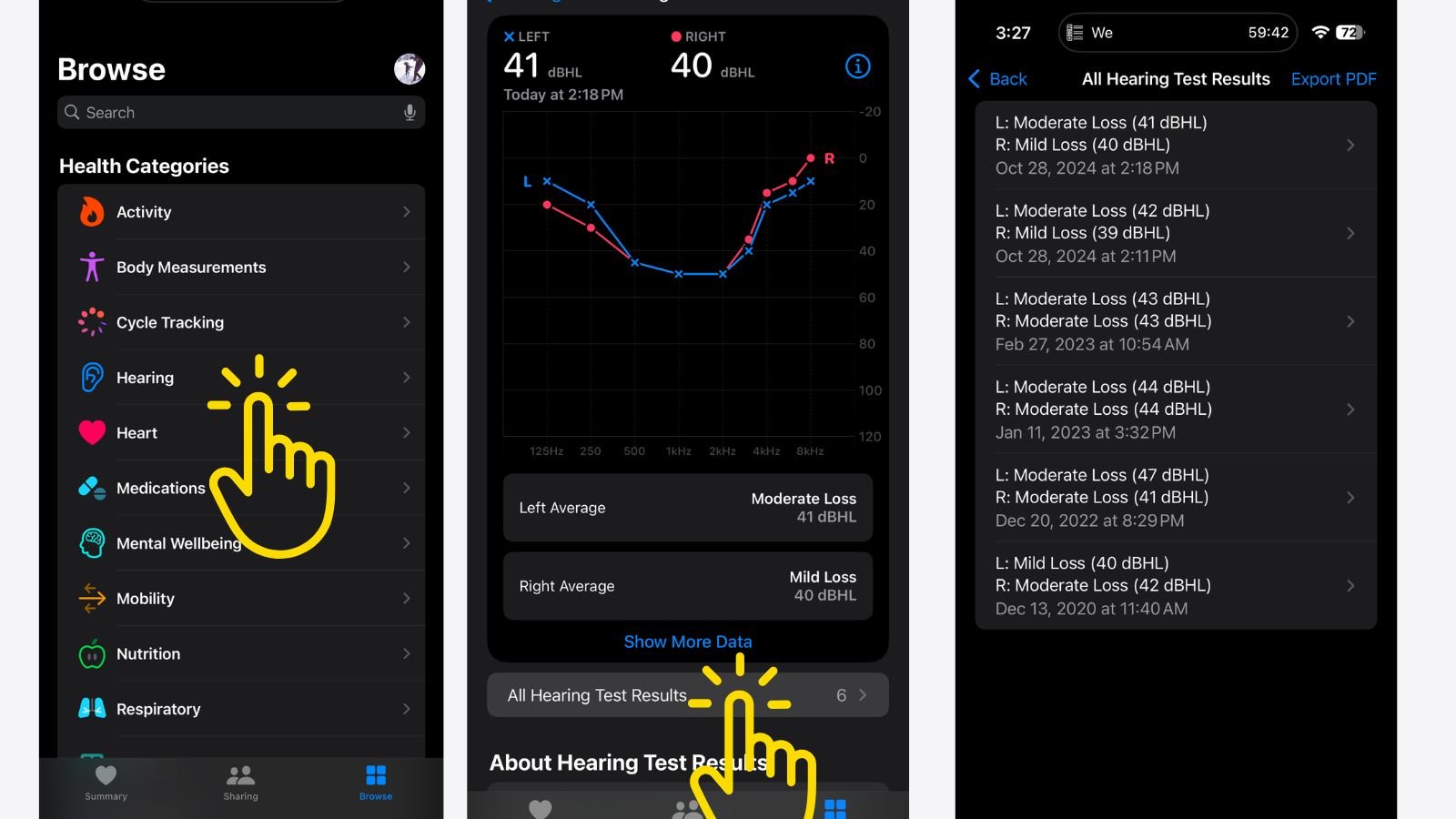
Step 3 (Alt): Upload Your Professional Audiogram
If you have a hearing test from an audiologist, either in print or as a PDF, you can upload those results directly into Apple Health. Apple uses your device’s camera to scan the printout and convert it into a compatible hearing test for use with AirPods.
To update your hearing results:
- Tap Update Hearing Results.
- Scroll to the bottom and select Add Hearing Test Result.
- Choose Scan with Camera (recommended), or manually enter your hearing test values if preferred.
.jpeg)
Step 4: Customize Your Sound
Your AirPods Pro 2 hearing aids are now customized to your hearing. To fine-tune your sound settings further, tap on Adjustments. Here, you can:
- Increase hearing aid volume
- Adjust the balance between the right and left ears
- Modify the tone from darker (more bass) to brighter (more treble)
- Reduce ambient noise levels
Additional features include Conversation Boost (which activates directional microphones for clearer speech) and Swipe Controls (enabling volume adjustments with a simple swipe on the device).
.jpeg)
You can also access these settings by tapping the ear icon in your Control Center and selecting Hearing Assistance. In this section, you can manage how your personalized audio applies to different media. Media Assist enables your hearing settings for streamed music, calls, and video by default, but you can toggle this off if needed.
.jpeg)
My Experience Wearing AirPods Pro 2 as Hearing Aids
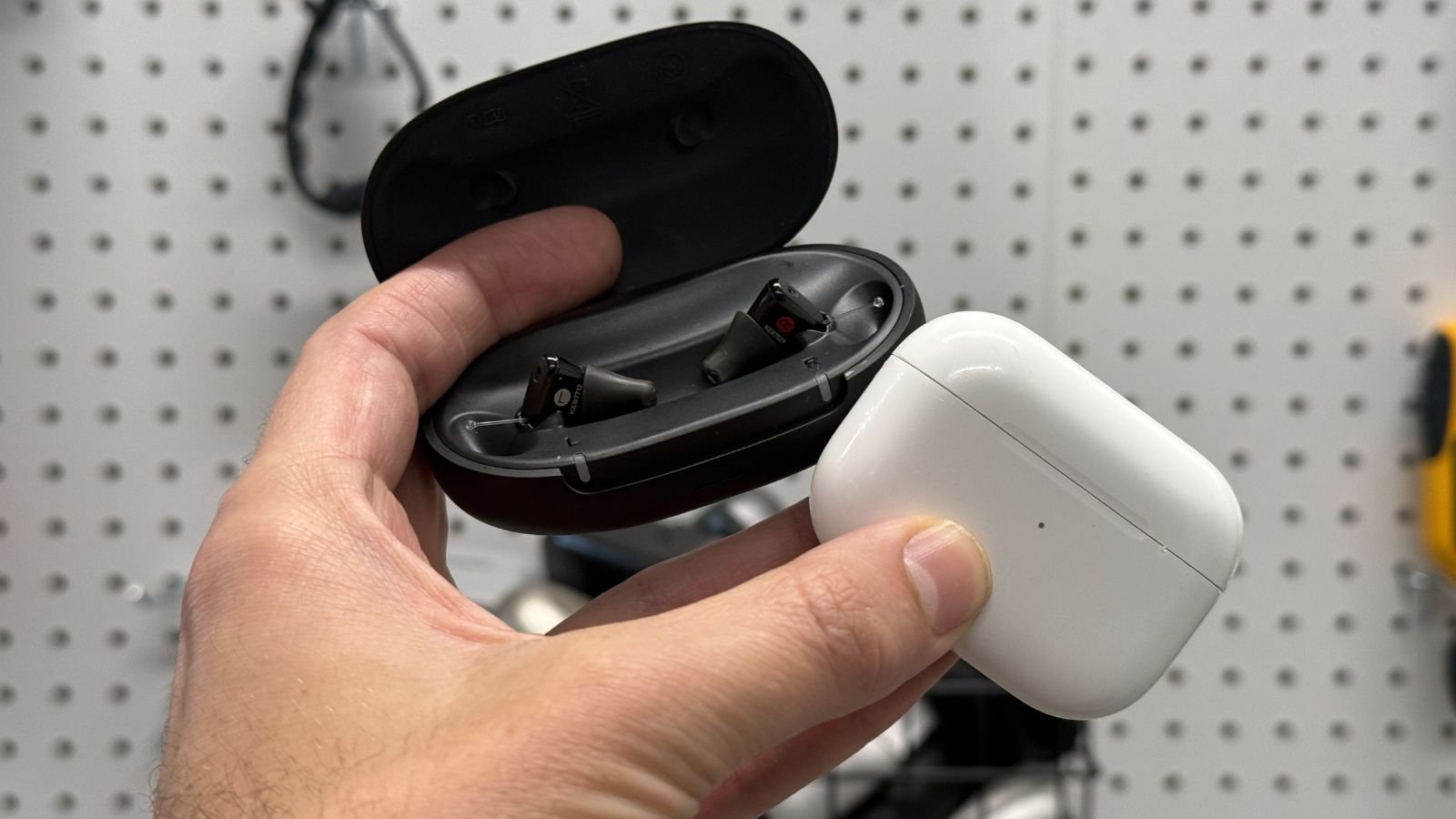
I was eager to see how they stacked up against dedicated hearing devices. After a few months of testing, here’s what stands out:
- Comfort & Fit: If you’ve worn AirPods before, you’ll know what to expect—these are comfortable for a few hours but not ideal for all-day wear. Unlike traditional hearing aids, which are designed to be nearly invisible or sit discreetly behind the ear, AirPods are more noticeable, which might require a bit of explaining to those around you.
- Social Dynamics: On a recent trip, I used my AirPods in transparency mode and noticed people often glanced at my ears, wondering if I was speaking to them or on a call. This could be even more challenging with friends, colleagues, or family.
- Setup & Customization: Apple has nailed the setup process. With iOS 18.1 or later, you can take a built-in hearing test that personalizes the amplification to your needs. The interface is intuitive, letting you adjust volume, balance, and even fine-tune sound clarity with a simple slider.
- Sound Quality & Performance: AirPods Pro 2 excel at noise reduction—if you want to dampen background noise like air conditioning or wind, they do an impressive job. However, when it comes to speech clarity, particularly in conversations with my three-year-old daughter, I found them lacking in crispness compared to dedicated hearing aids. I had to crank up the treble to pick up higher-frequency speech, something a traditional hearing aid does automatically.
- Battery Life: AirPods Pro 2 offer between 4-6 hours on a single charge—almost enough for a cross-country flight but not quite sufficient for all-day use. In comparison, the Sony CRE-C20 provides up to 28 hours on a single charge, a substantial difference for those who need extended wear time.
- Overall Thoughts: For situational use—like amplifying voices in a quiet setting—AirPods Pro 2 are a solid option, especially for those already in Apple’s ecosystem. But if you’re looking for all-day comfort and the best speech clarity in noisy environments, traditional hearing aids still lead the way.
Even with these limitations, it’s exciting news that Apple—one of the world’s most beloved companies—is diving into hearing tech. Would I recommend them? If you already own AirPods Pro 2, updating your iPhone and testing the hearing aid feature is a no-brainer. But for serious, everyday use, dedicated hearing aids remain the gold standard.
Final Thoughts
Overall, I’m impressed! If you or a loved one has mild hearing loss, the AirPods Pro 2 with Apple’s new built-in hearing aid feature could be a great way to try out amplification for the first time.
While they likely won’t replace proper hearing aids in the long run, at $249—and packed with additional value—AirPods Pro are a smart, accessible starting point. For more advanced options, explore our guide to the best hearing aids.


